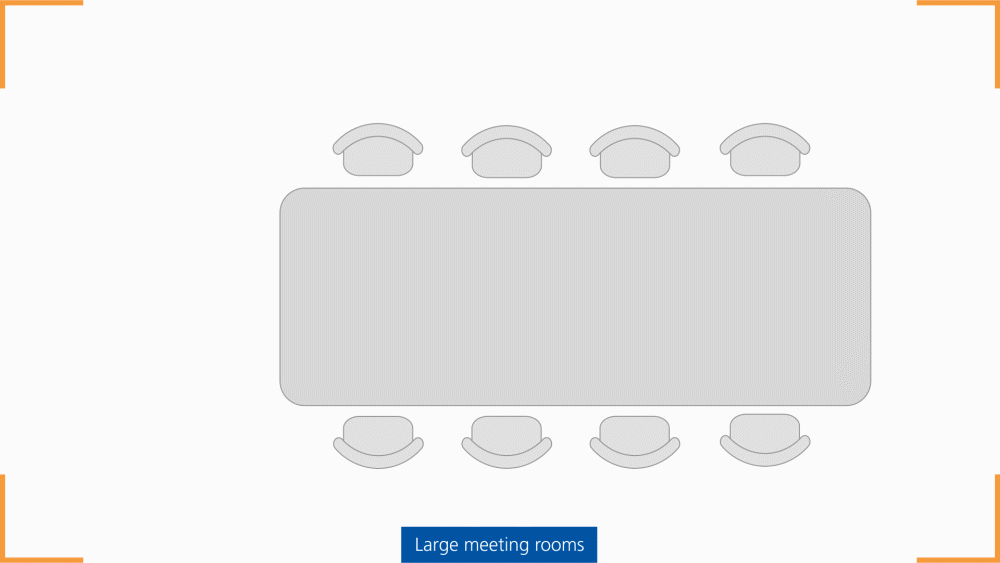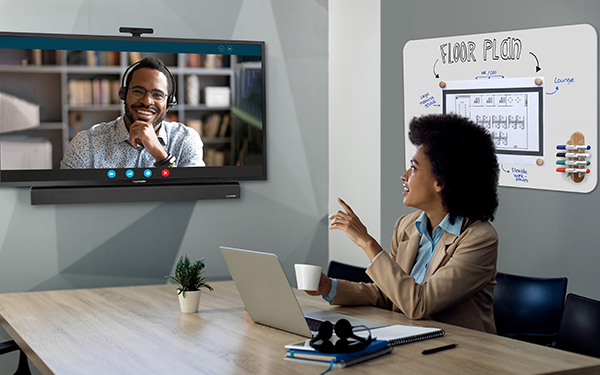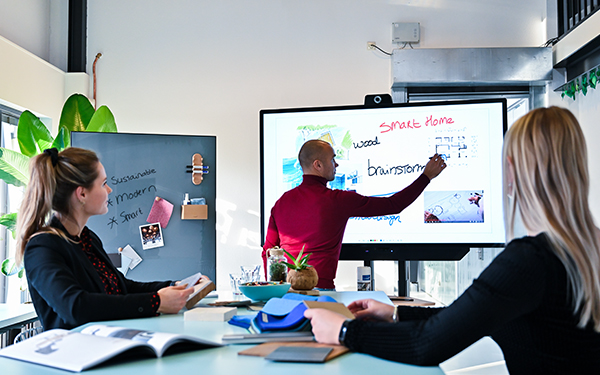
Make space(s) for collaboration
Based on the positive experiences people have with working from home over the last year, it is expected that a majority of professionals will not return to the office full-time. But sooner or later a gradual and partial transition back to the office will come, because of the shared desire to meet and collaborate in person.
As a consequence, organisations need to start to rethink their different meeting spaces to make sure that they are ready and fit-for-purpose once employees start to transition back. This requires two pressing questions to be answered to develop a truly safe and productive environment:
Ideal to use as brainstorm rooms or project studios to meet with a group, update each other on the progress and work together on new ideas.
Ideal for 1:1 physical meetings and for use as “virtual boxes” to collaborate with colleagues or external partners via video conferencing.
Ideal for spontaneous, informal meetings or stand-up meetings to get a status overview or have a brainstorm together.

Activity-based working
Moving forward, many professionals will choose their working location based on the their scheduled activities where the main reasons to go the office will be to meet and collaborate with others. This new role of the office as a social hub and collaborative workplace means that the purpose and requirements of the office are changing drastically.
To create user-centric spaces and optimally support activity-based working, new office lay-outs need to offer a variety of large, small and open meeting spaces that facilitate learning experiences, foster creativity and enable bonding with customers and colleagues.

User-centric meeting spaces
Based on different activities and group sizes, many of the existing meeting spaces in the office need to be reshaped to facilitate collaboration – in the same space and remotely. For this, the key requirements are:

User + Activity = Space
Moving forward, people working in the office will choose different meeting spaces for different activities. This requires that the meeting spaces in the office offer a combination of analogue and digital collaboration and visualisation tools that can flexibly be used for different activities.
In general, these meeting spaces can be divided into three categories: (1) large meeting rooms / boardrooms, (2) small meeting rooms / huddle rooms and (3) flexible / open meeting spaces, which all have different benefits and requirements in the future office setting.
Do you want to know more about these solutions?
Tel. : (+31) (0)573 - 71 30 00
Email : info@legamaster.com